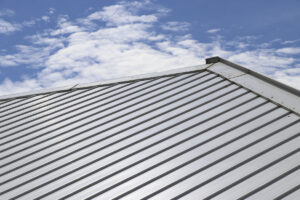What is TPO?
Thermoplastic Polyolefin (TPO) is a material used for roofing that is single-ply in thickness and also has reflective property. TPO has a membrane made from ethylene-propylene and polypropylene, which polymerizes these two materials together. The white membrane of TPO roofing materials remains exposed throughout a roof’s life. The year 1989 was the first time that TPO roofing membranes were introduced for use with roofs. TPO was also first installed in 1989. Since then, TPO has been installed on rooftops, globally.
The Many Benefits of TPO Roofing
For those homeowners who live in specific regions with more days of the year where cooling apparatuses are used than those days where heat is needed, TPO roofing membranes are a more acceptable option for your roofing needs. Indeed, TPO membranes are also beneficial because they can reflect the sun’s UV radiation. Membranes can keep the surface of the roof as well as the whole building cool during those intense summer months. Financially, this helps to reduce one’s cooling costs, while helping to decrease those important carbon footprints as well. In addition, there are several other reasons that TPO roofing systems are beneficial, such as:
Durability
TPO is a material that is heavily resistant to many things that the harsh elements can bring like punctures, rips, tears, and indentations from hard objects hitting the material. There are three thicknesses available for TPO: 0.080”, 0.060”, and 0.045”. The right thickness depends on one’s situation. A professional roofer can help you decide what would work best for your building.
Flexibility
TPO is flexible based on the how it can work with the slope levels of surfaces. TPO material can also be heated, then reshaped many times. Reshaping roofing materials is key to addressing those essential roofing details. TPO’s flexibility provides for a quick installation, saving home and business owners both money and time. IN addition, TPO needs very little maintenance during its product life.
Environmentally Friendly
TPO’s membranes have no toxic ingredients and can be fully recycled, which helps to address sustainability issues and the environment. Reducing cooling needs, as mentioned earlier, can also help decrease a building’s carbon footprint.
Long-Lasting Performance
With a hot-air gun, TPO membranes are welded at temperatures of 926 ºC. A fused seam is much stronger than the membrane’s field because of this critical welding technique. Fused seams will last longer without giving way to leaks.
A Cool Roof
Keeping a building cool during the Texas heat is very important for home and business owners. Having a light colored building roof like one that uses a TPO roofing system is beneficial because it helps to reflects the sun’s energy. This helps to reduce cooling costs and also lessen the urban heat island (UHI) effect.
What Other Options are Available from TPO?
For homeowners looking for options similar to TPO, there is UltraPly™ TPO, UltraPly™ TPO InvisiWeld™ System, and UltraPly™ TPO Accessories. These three options provide many essential features for roofing. Some of the key features of UltraPly™ TPO InvisiWeld™ System include InvisiWeld™ plates, which are welded to the membrane’s underside. This system also provides essential aesthetics instead of the traditional approaches to TPO in which they were mechanically connected.
These InvisiWeld™ systems are very easy to have installed in frigid environments also requires fewer fasteners than those mechanically attached systems. The InvisiWeld™ system also allows for a balanced distribution of wind load across the roof. Because of the reduced wind load, the noise caused by roof flutter is reduced significantly.
Need more information about TPO Roofing Systems? Contact Divided Sky Roofing & Solar, a San Marcos, TX roofing company, for more information.









